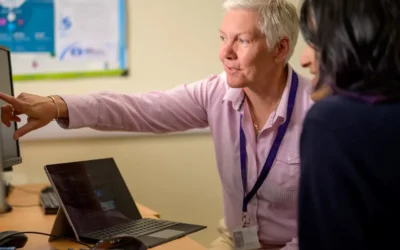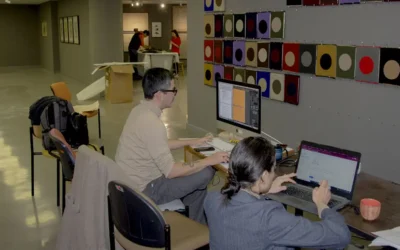Resources for Museums on How to Identify and Articulate Value

Rachael Cristine Woody
Articulating the value of museums and ourselves as museum professionals is hard to do. We know what we do and why it matters, but it’s difficult to quantify for an outside audience.
Speaking for myself, the value of museums is so evident that I’m at a loss as to how to explain the value proposition. This difficulty is compounded when you consider that we also need to explain why history is important, why liberal arts (in addition to STEM) education is vital, and why critical thinking and the evaluation of historical resources are imperative for a healthy democracy. These are big concepts to convey—to ensure museum sustainability, we as museum professionals need to continue our work on how to effectively communicate value and importance in a way that’s easily consumable for the public.
With that in mind, I’ve begun to assemble a list of resources to help museums and cultural heritage organizations. I highly recommend you bookmark the resources you find most effective for easy reference. And if there’s a resource you love that I missed please comment on this post to let me know!
AAM Resources to Help you Talk About Museums and Their Value
The American Alliance of Museums’ (AAM) Museum Facts & Data is the first place to stop for statistics on museum visitorship and much more. For example, AAM provides evidence on how museums are:
- Economic engines
- Service oriented
- Community anchors
- K-12 curriculum and general population education contributors
- Open to everyone
- Saviors of species
Sharing the Value of Heritage Toolkit
Oregon Heritage Commission recently released a Sharing the Value of Heritage Toolkit in an effort to help heritage groups identify and articulate the value of their work. The toolkit provides reports, templates, and tips for heritage museums to help them communicate what they do and why it matters. There are several resources listed under: Cultural Impact Tools, Economic Impact Tools, and links to Oregon Heritage reports.
History Relevance: Value of History Statement
History Relevance promotes a shared language and other tools and strategies to mobilize history organizations around the relevance and value of history. Check out their History Relevance Toolkit to craft your “Value of History” statement.
Articles with Talking Points on Why Museums are Important
There are two articles I regularly reference in my work:
In December 2014 Joan Wages, President and CEO of the National Women’s History Museum, wrote a HuffPost piece speaking to why museums are important. The article offers great talking points to adopt. Wages has fought for nearly 20-years to create a physical National Women’s History Museum adjacent to the National Mall in Washington, DC. She’s one of the best when it comes to articulating the value of museums—a constant and necessary practice.
In a 2013 interview with CNN Ford W. Bell, former AAM President, makes a compelling case for why museums are still relevant. Relying on both quantitate and qualitative data, Bell outlines all the ways museums are vital to their community and the nation at large.
The Value of Museums in Society
Emmanuel N. Arinze, then President of the Commonwealth Association of Museums, gave a lecture speaking to The Role of the Museum in Society. Even though the lecture is 20-years old, it does an excellent job building the case for why museums are critical to society.
Florida Museum offers The Value of Museums, a webpage specific to how their museum serves the community, has direct applications to fields of study, provides examples of their impact, and offers how they see their impact on the future. Every museum should consider performing the same exercise and publishing it to their website.
How to Stay Alert to Advocacy Issues
Learning how to talk about the value of museums is critically necessary in advocacy work. Many of the museums in the United States are impacted by policy and funding decisions made at the national level by congressional representatives. Museum professional organizations (such as AAM) are our biggest advocates for communicating the value of museums to our congressional members. But these organizations can’t do it alone and many times representatives want to hear from local constituents: you. Anytime funding or policies are announced that might impact the museum field and museum sustainability, AAM and others will put out a call to membership to contact their representatives. To stay on top of advocacy issues check out AAM’s Advocacy page.
Conclusion
We still have work to do when it comes to distilling the complex issues that surround the importance of museums and our role as museum professionals. Use these resources to get started on determining the value of your museum, how it’s positively contributed to the local economy, and the services it provides to the community. The more we practice quantifying and articulating value, the healthier the public perception of the museum’s value will be. And perhaps more importantly, you’ll be prepared when challenged on your museum’s value proposition through policies or budget cuts.

Rachael Cristine Woody
Consultant, author, and blogger Rachael Cristine Woody advises on museum strategies, collections management and grant writing for a wide variety of clients. Learn about Lucidea’s Argus solution for museum collections management and download your free copy of Rachael’s new book for Lucidea Press, How to Select, Buy, and Use a Museum CMS!
Similar Posts
How to Incorporate Interns in Museum CMS Projects: Data Cleanup and Refinement
A museum expert details how interns can be successfully included in museum CMS projects at the data cleanup and refinement stage.
How to Incorporate Interns in Museum CMS Projects: Data Creation
A museum expert details how interns can be successfully included in museum CMS projects at the data creation stage.
How to Incorporate Interns in Museum CMS Projects: Data Capture
A museum expert highlights how interns can be included in museum CMS projects at the data capture stage
How to Incorporate Interns in Museum CMS Projects
A museum expert highlights how interns can be included in museum CMS projects with three project ideas.
Hosting service
Enjoy all of the benefits of your Lucidea solution with secure, reliable, stress free hosting
Programs & incentives
No matter your size or budget, we’ve got you covered, today and tomorrow




Leave a Comment
Comments are reviewed and must adhere to our comments policy.
0 Comments